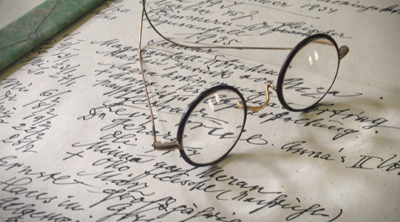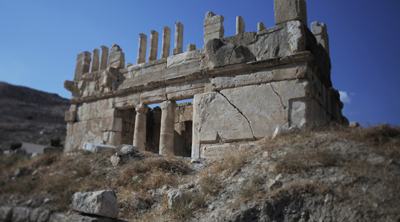Jewish Córdoba
In this clip from The Story of the Jews, Simon Schama journeys to Córdoba, once the capital of the Islamic Umayyad dynasty, and under their protection, one of the great centers of Sephardic Jewish life in Muslim Spain.
This is place the Arabs called el Andalus, and we now know as Andalusia. The region is located in the deep south of Spain, the country the Jews called Sepharad, and at its heart is the city of Córdoba.
Córdoba was a city of gardens; fountains, canals, and post delivered by carrier pigeon. The Mesquita, the great mosque built by the Umayyads, stands as the architectural consummation of their ambition.
But in the shadow of the mosques were the synagogues, and they too wove worldliness with holiness to create patterns of intoxicating beauty, an impulse that endured for centuries. Inspired by Arabic models, that same note was sounded in the poetry of the Sephardim, a literature that gave the Hebrew language a startling new life outside of the synagogue.
For the first time, Hebrew, the lofty language of the Bible and the Talmud, was used by Jewish writers to embrace the earthiness of life: war and friendship, death and sex. This marked a brand new, unprecedented moment in Hebrew literature.
But this heyday of Judeo-Arabic culture came to an end in the 12th century, as rival monotheists fought for control of Sepharad. The re-conquest of Spain by Christian kings gathered pace from the North while, from the South, fundamentalist Islamic warrior tribes from Morocco supplanted the worldly Islamic rulers of el-Andalus. Caught between Cross and Crescent, the Jews suffered from the intolerance of both.
In the 13th century, Muslim rule in Andalusia collapsed, and the Mesquita in Córdoba was turned from mosque to Cathedral. At that pivotal point, the future for the Jews of Europe lay under the shadow of the cross.
In this clip from The Story of the Jews, Simon Schama journeys to Córdoba, once the capital of the Islamic Umayyad dynasty, and under their protection, one of the great centers of Sephardic Jewish life in Muslim Spain.
This is place the Arabs called el Andalus, and we now know as Andalusia. The region is located in the deep south of Spain, the country the Jews called Sepharad, and at its heart is the city of Córdoba.
Córdoba was a city of gardens; fountains, canals, and post delivered by carrier pigeon. The Mesquita, the great mosque built by the Umayyads, stands as the architectural consummation of their ambition.
But in the shadow of the mosques were the synagogues, and they too wove worldliness with holiness to create patterns of intoxicating beauty, an impulse that endured for centuries. Inspired by Arabic models, that same note was sounded in the poetry of the Sephardim, a literature that gave the Hebrew language a startling new life outside of the synagogue.
For the first time, Hebrew, the lofty language of the Bible and the Talmud, was used by Jewish writers to embrace the earthiness of life: war and friendship, death and sex. This marked a brand new, unprecedented moment in Hebrew literature.
But this heyday of Judeo-Arabic culture came to an end in the 12th century, as rival monotheists fought for control of Sepharad. The re-conquest of Spain by Christian kings gathered pace from the North while, from the South, fundamentalist Islamic warrior tribes from Morocco supplanted the worldly Islamic rulers of el-Andalus. Caught between Cross and Crescent, the Jews suffered from the intolerance of both.
In the 13th century, Muslim rule in Andalusia collapsed, and the Mesquita in Córdoba was turned from mosque to Cathedral. At that pivotal point, the future for the Jews of Europe lay under the shadow of the cross.
Find educational resources related to this program - and access to thousands of curriculum-targeted digital resources for the classroom at PBS LearningMedia.
Visit PBS Learning Media


